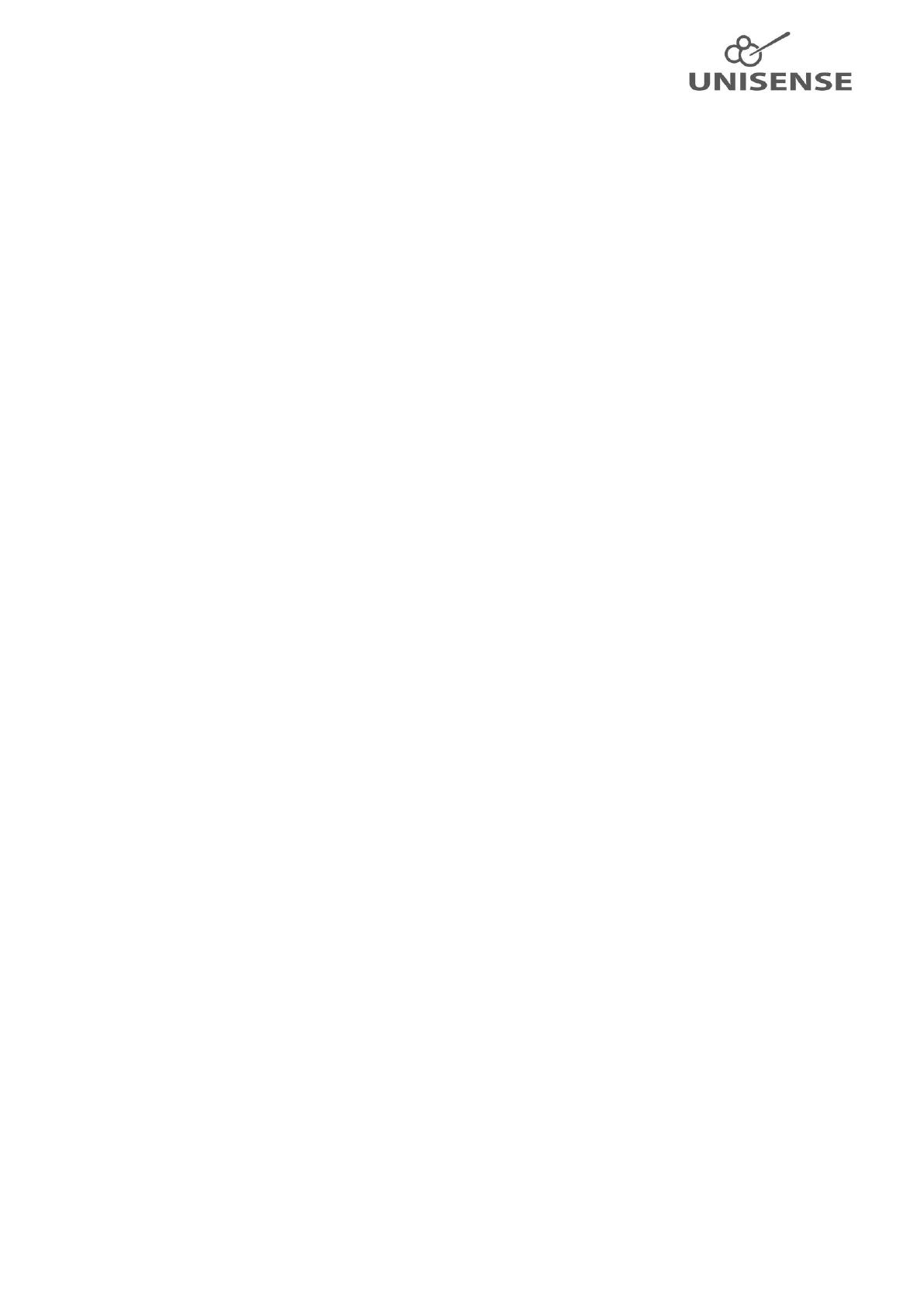
5
The concentration is given both in µmol N2O/l and mg N2O/l. The concentration in mg N2O-N/l can be
obtained by multiplying the N2O concentration in mg N2O/l by the ratio of the N content in N2O to the
molar mass of N2O:
Concentration in mg N2O-N/l = Concentration in mg N2O/l x (28.0136 (g N/mol N2O) / 44.013 (g/mol))
Concentration in mg N2O-N/l = Concentration in mg N2O/l x 0.6365
The empty vials (Exetainers) in the calibration kit should be filled with the water or medium in which
the measurements will be done. This will ensure that the calibration and measurements are
performed in the same environment, i.e., same salinity, composition of salts, proteins etc. This is
important because the sensor reacts to the partial pressure of the gas, not the concentration as such,
and in the software, this is recalculated into a concentration. The relationship between concentration
and partial pressure depends on the salinity and temperature.
5 Standard calibration procedure
For calibration of N2O sensors a high and a low calibration point are needed.
WARNING: Low Range N2O sensors must never be exposed to more than 50 µmol/L N2O. Therefore,
the dilution in 5.1 below must be different (0.5 ml instead of 1.0 ml).
Note that Microrespiration sensors and sensors with flow cells will not fit the calibration cap and must
be calibrated as described in sections 5.4 and 5.5. For calibrating High Range N2O sensors that work in
the mM range, use the N2O Calibration kit - High Range.
5.1 Preparation of the calibration solution
1. Mount the 50 x 1.2 mm needle (red) on the 1 ml syringe and mount the 80 x 2.1 mm needle
(green) on the 10 ml syringe.
2. Open the Exetainer and put two glass beads into the vial.
3. Fill the Exetainer with water of the same composition as the water where the measurements
will be done.
4. Close the Exetainer with the lid, avoiding any bubbles or headspace.
5. Adjust the Exetainer temperature to the sample/measuring temperature.
6. Insert the 30 x 0.6 mm needle (blue) needle through the septum so the tip is just below the
septum.
7. Open the ampoule with the N2O containing water by breaking the top off (see note A below).
Make sure that you don’t shake or mix the content of the ampoule.
8. Fill the 1 ml syringe with 1.0 ml of the water from the ampoule (see note B below).
9. Inject the 1.0 ml N2O containing water into the Exetainer by inserting the needle fully. The
excess water from the Exetainer will be expelled through the open needle (see note C below).
For Low Range sensors, inject only 0.5 ml.
10. Remove first the open needle and then the 1 ml syringe from the Exetainer.
11. Shake the Exetainer vigorously to ensure an even distribution of the N2O.
12. The calibration solution is now ready and should be used within a couple of hours.















